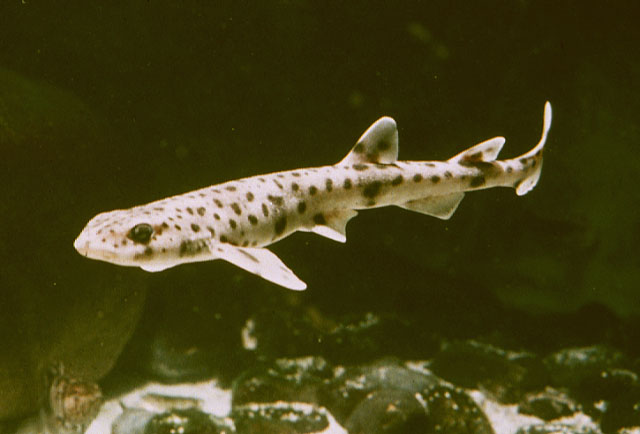| North Sea (sw coast of Sweden to Copenhagen, Denmark), Northeastern Atlantic Ocean (Ireland, United Kingdom, France, Portugal); Mediterranean Sea (Spain, France, Italy, Tunisia, Algeria, Morocco); nw Africa, close to the Strait of Gibraltar and to the north of Mauritania (20º30’N); including Norwegian Sea. |
|
This species is distinguished from all its congeners by the following characters: shallow nasoral grooves and laterally situated posterior nasal flaps (vs. no grooves and posterior flaps on the posterior border of the excurrent apertures in congeners, except in S. duhamelii); distance between the anterior nasal flaps 6-7.5 times smaller than the anterior nasal flap width (vs. 3.5-5 times smaller in S. duhamelii; two times in the other species); lower labial furrow 2.1-2.2 times smaller than mouth width (vs. more than 3 times in other species, except S. duhamelii). Colouration: color pattern with dark spots well-defined, predominantly smaller than spiracles (vs. no dark spots in S. capensis, S. comoroensis, S. hesperius, S. meadi, S. torazame, S. torrei; reticulated pattern in S. rotifer; dark spots predominantly larger than spiracles in S. cervigoni, S. garmani, S. haeckelii, S. stellaris; diffuse spots in S. duhamelii); clasper with rough terminal dermal cover (also found only in S. capensis) (Ref. 120402).
Description: Less than conspicuous characters that help distinguish this species: anterior nasal flaps covering the upper lip (vs. not covering the upper lip in congeners, except S. cervigoni, S. comoroensis, S. duhamelii, S. garmani, S. stellaris); spots spread on the entire dorsolateral surface (vs. spots restricted to the saddles in S. boa, S. cervigoni, S. haeckelii); oral canal of lateral line system with 8-10 pores (vs. 5-6 in S. hesperius; 10-12 in S. duhamelii; 9-13 in S. torrei); commissural teeth presenting 3 or 4 cusplets (vs. 2 or less in the other species, except in S. boa, S. capensis, S. hesperius); interdorsal space 0.6-1.0 times the anal base (vs. larger than the anal base in S. boa, S. cabofriensis, S. haeckelii, S. hesperius, S. meadi, S. retifer, S. torrei, S. ugoi); pelvic fins triangular (vs. subrectangular in S. garmani, S. stellaris, S. torazame); males with pelvic apron extending through almost the entire length of the pelvic inner margins (vs. extending to only 2/3 in the other species, except in S. capensis, S. duhamelii, S. torazame, S. torrei); with terminal 3 cartilage (vs. without in S. cabofriensis, S. cervigoni, S. comoroensis, S. duhamelii, S. haeckelii, S. stellaris, S. torrei, S. ugoi); dorsal terminal 2 cartilage elongated and corresponding to 1/4 of dorsal terminal cartilage (vs. reduced and subtriangular in S. cabofriensis, S. capensis, S. cervigoni, S. haeckelii, S. ugoi; corresponding to 1/3 in S. boa, S. comoroensis; same length of dorsal terminal cartilage in S. torazame); neurocranium with basal plate width 58.2-65.1% NL (vs. 68.2-69.3% in S. boa; 65.8-75.3% in S. capensis; 71.9-82.6% in S. torazame; 67.4-69.5% in S. torrei); distance between nasal apertures 27.8-37.6% NL (vs. 12.8-15.6% in S. boa; 20.1-26.9% in S. capensis; 17.9-21.6% in S. hesperius; 13.9-25.6% in S. rotifer; 15.0-18.3% in S. torrei); optic capsules width less than 2 times their length (vs. 2.7-2.8 times in S. boa, S. capensis, S. hesperius, S. meadi, S. stellaris); upper teeth 40-61 (vs. 33-42 in S. torrei); lower teeth 36-50 (vs. 48-85 in S. capensis); monospondylous vertebrae 34-40 (vs. 44-46 in S. capensis; 40-45 in S. cervigoni; 48 S. garmani; 46-48 in S. meadi; 43-47 in S. stellaris); adult males between 37.0-52.0 cm TL and adult females between 37.0-56.0 cm TL (vs. 26.9 cm and 29.4 cm in S. torrei, respectively; greater than 60.0 cm TL in S. capensis, S. cervigoni, S. stellaris) (Ref. 120402) |
| Most common catshark in coastal waters of Europe (Ref. 32804). Inhabits continental shelves and uppermost slopes. Found on sandy, coralline, algal, gravel or muddy bottoms. Occurs mainly between 10-100 m depth in the northeast Atlantic and up to 400 m depth in the Mediterranean Sea (Ref. 88187) and from 288-780 m in the eastern Ionian Sea (Ref. 56504). They sometimes occur in midwater. Nocturnal species, males resting on substrate and females hiding in shallow (0.5-1.5 m depth) caves and crevices during the day (Ref. 88835). Feed on a variety of benthic invertebrates, including mollusks, crustaceans, small cephalopods, polychaete worms, and small bony fishes (Ref. 244, 11889). Males have been found to forage in shallow prey-rich areas with soft sediment or areas covered with filamentous algae (Ref. 88836). Oviparous, with a single egg laid per oviduct at a time. Detect weak electric fields generated by other organisms (e.g. potential prey) (Ref. 10311). Utilized fresh and dried-salted for human consumption, also for oil and fishmeal. |

